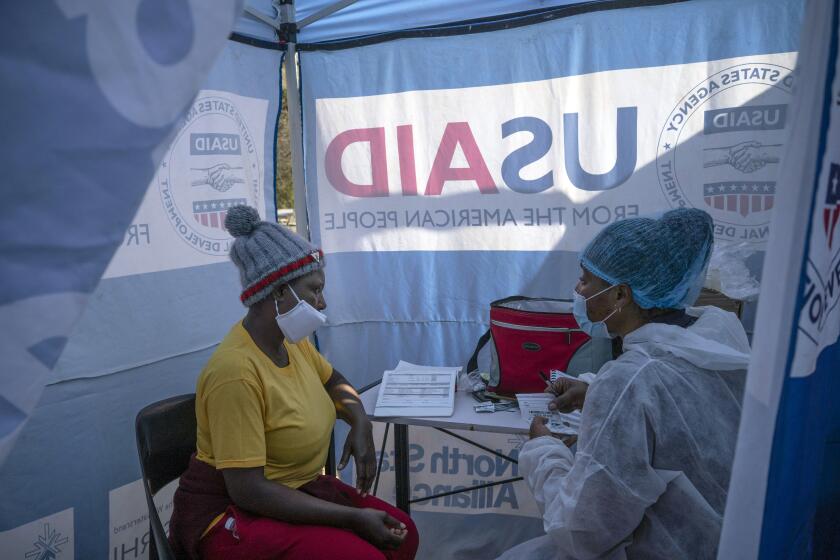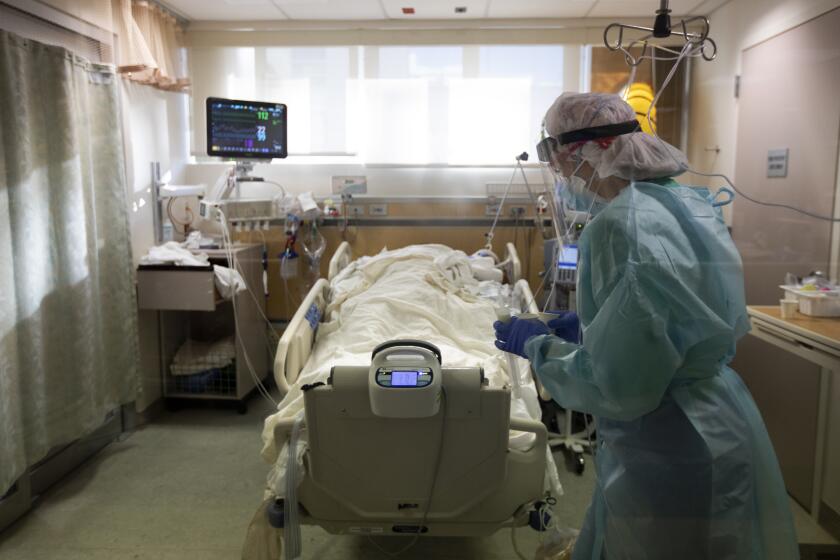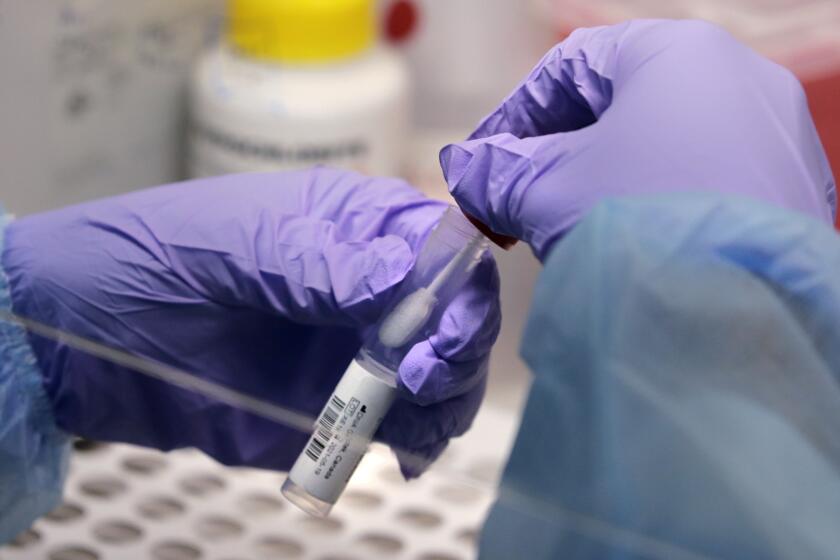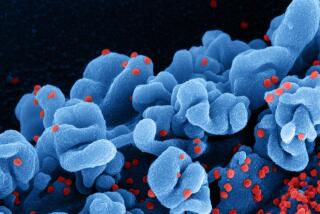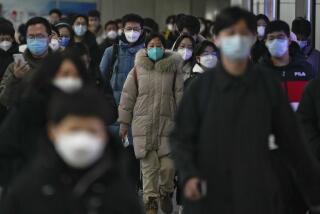Did failure to adequately treat HIV patients give rise to the Omicron variant?

The Omicron variant, now present in at least 23 countries around the world, was probably incubated in the body of a person with an immune system battered by HIV or another immune-compromising condition that can cause a prolonged coronavirus infection, according to the South African scientist who detected the fast-spreading genetic mutant.
Tulio De Oliveira said the emergence of Omicron in a patient unable to clear the virus quickly was “the most plausible” origin story for the world’s newest variant of concern.
There’s good reason to think so.
Researchers in the United States and Europe have seen coronaviruses with frightening mutations arise in COVID-19 patients whose natural defenses have been suppressed by drugs to fight cancer, manage autoimmune disorders like rheumatoid arthritis, or keep transplanted organs from being rejected.
De Oliveira has been warning for months that the people mostly likely to spawn such mutations in sub-Saharan Africa are the roughly 8 million with unrecognized or poorly treated HIV. Largely young, unvaccinated and with debilitated immune systems, these people could “become a factory of variants for the whole world,” he said.
In June, his team chronicled the emergence of more than 30 genetic changes in SARS-CoV-2 specimens taken from a single South African woman with advanced uncontrolled HIV. The mutations they saw — including several that could erode vaccine protection and boost disease transmission — appeared over a period of six months.
Researchers in South Africa have documented an ominous development: the collision of the COVID-19 pandemic with HIV/AIDS.
Now De Oliveira worries that a similar scenario might have given rise to Omicron. Last week, he alerted the World Health Organization that his team had detected a variant with dozens of new mutations that was circulating in Gauteng, South Africa’s most densely populated province, and in neighboring Botswana. The samples the scientists studied were collected between Nov. 12 and Nov. 20.
More than 30 of the mutations they saw were in the code for the crucial spike protein of the virus — the key that picks the lock to human cells and initiates an infection. Many of the changes were familiar to De Oliveira from his study of HIV patients with prolonged coronavirus infections.
The Omicron variant appears to have played a key role in driving the dramatic rise in new cases among students, most of them young adults, at Tshwane University of Technology in Gauteng, said De Oliveira, director of the Centre for Epidemic Response and Innovation at Stellenbosch University.
With Johannesburg at its heart, Gauteng province is the epicenter of South Africa’s HIV epidemic. It is home to roughly 20% of South Africa’s 7.5 million people living with HIV.
Across the country, 2.2 million people are infected with HIV that is undetected, untreated or poorly controlled. These patients’ immune systems are “pretty heavily suppressed,” said Dr. Jonathan Li, a Harvard infectious-diseases specialist who was among the first to detail extensive coronavirus mutations in an immunosuppressed patient. Under attack by HIV, their T cells are not providing vital support that the immune system’s B cells need to an clear infection.
“The sheer number of mutations that arose all of a sudden here is really reminiscent of what we’ve seen,” Li said. “If I had to guess, I would say this is likely how Omicron came about.”
COVID-19 patients who take months to overcome their coronavirus infections despite treatment can become incubators of dangerous new strains.
Dr. Bruce Walker, an immunologist and founding director of the Ragon Institute in Cambridge, Mass., warned against stigmatizing patients whose conditions may give rise to variants. But Omicron’s emergence from a patient with prolonged infection is a pretty good bet, he said.
“We know that in the setting of severe immune compromise, the virus can stay in someone’s body for a long time, and the longer it can make copies of itself, the virus can make mistakes and can escape from what’s left of such a patient’s immune system,” Walker said.
A new variant will bear no telltale signature of how or where it came into existence, he added. But “statistically speaking, there are a variety of causes of immune suppression. And in southern Africa, one of the leading causes is HIV.”
In an essay published in Thursday’s edition of the journal Nature, De Oliveira and three South African colleagues warned that “Africa is being completely left behind,” as COVID-19 vaccines, medicines and testing supplies are hoarded by the world’s affluent countries. If those countries fail to help African countries control both HIV and COVID-19, the scientists wrote, it will undermine their efforts to extinguish the pandemic worldwide.
As expected, the Omicron coronavirus variant, first detected last month, has reached the U.S., with the first case found in California.
While nearly 40% of the global population has been fully vaccinated against COVID-19, the rate for Africa is less than 7%, the scientists wrote. In South Africa, 24% of the public has been fully vaccinated, according to Our World in Data.
To complicate matters, the continent’s fitful progress in securing vaccines has prompted public health officials to focus first on elderly patients. The result is that virtually all of Africa’s young adults remain unvaccinated. And since 80% of those with HIV across the continent are under 50 years old, vanishingly few patients who are at risk of harboring a prolonged coronavirus infection have been vaccinated.
In an interview this week, De Oliveira said there could be other explanations for the sudden emergence of a variant with so many mutations.
It’s possible Omicron has been circulating for months somewhere else, steadily accumulating genetic changes. (It was present in the Netherlands by Nov. 19, nearly a week before De Oliveira’s announcement.) If the variant matured in countries where genetic sequencing is rare or absent, it might have flown under the radar until it arrived in South Africa — the continent’s genetic sequencing powerhouse — already laden with mutations, he said.
Walker, who called the detection of Omicron “an absolutely world-class performance” by the South African scientists, said that wherever it came from, the world cannot afford to allow the pandemic to rage unchecked on any continent.
“It’s in the nature of the virus to mutate,” he said. “It’s not like, if there were no HIV infection, we wouldn’t have to worry about this.”
